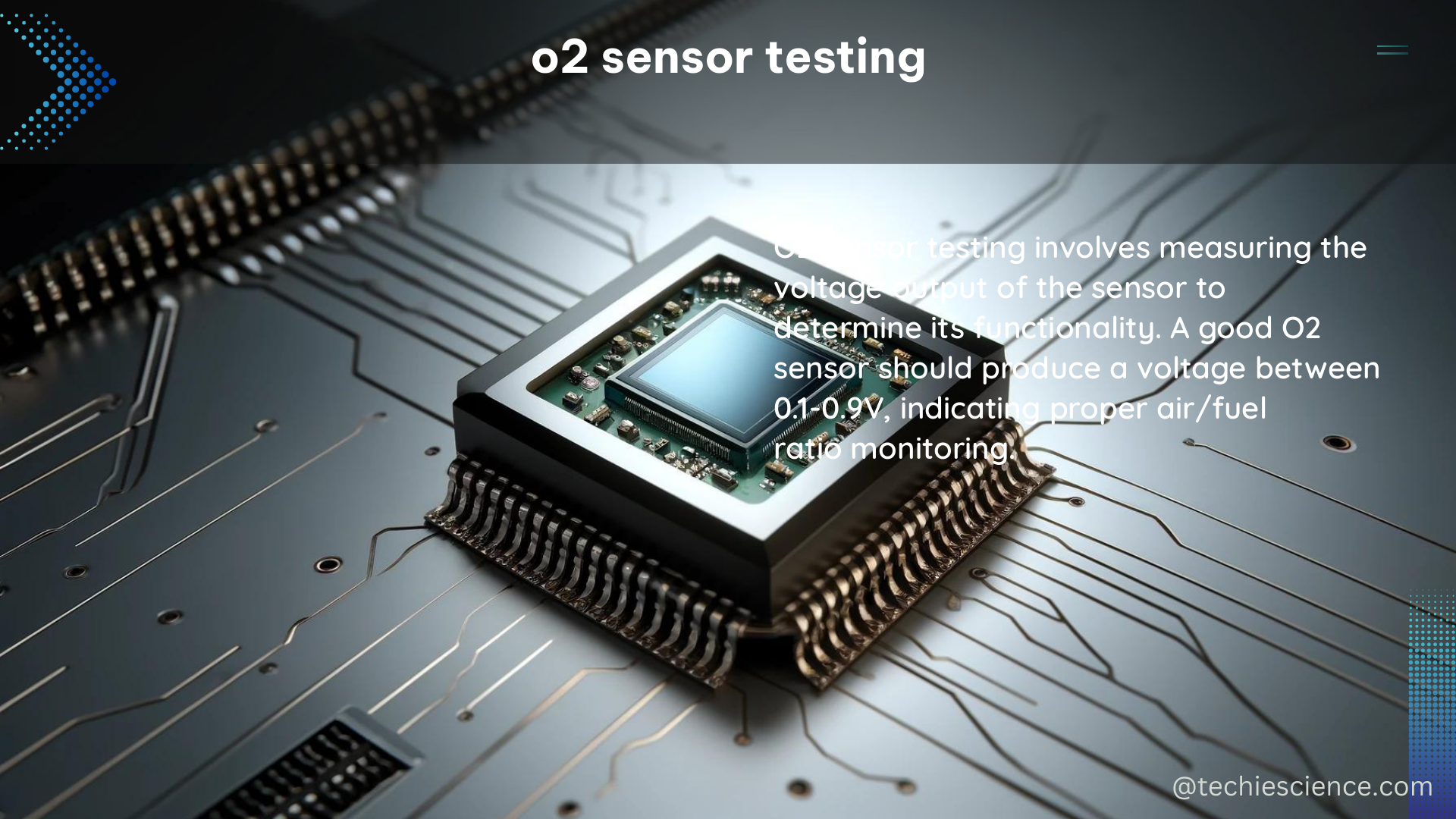O2 sensor testing is a critical process in determining the efficiency and performance of oxygen sensors in various applications, from industrial processes to automotive systems. This comprehensive guide delves into the technical specifications, advanced equipment, and methods used to measure the partial pressures of oxygen and nanomolar dissolved oxygen concentrations in situ laboratory systems.
Networked Luminescence Lifetime Measurement System for In-Situ O2 Sensor Testing
One study presents an easily constructible open-source design for a networked luminescence lifetime measurement system for in-situ measurements in arbitrary laboratory containers. This system is well-suited for measuring oxygen partial pressures in the 0-100 μbar range, with a maximum potentially usable upper range limit at around 10 mbar, depending on experimental conditions.
The key features of this system include:
- Sensor Specifications: The sensor has a limited drift and a detectability limit for oxygen at 0.02 μbar for short timescale measurements.
- Connectivity: Each sensor can connect to a Wi-Fi network and send the logged data either over the Internet or to a local server, enabling a large number of parallel unattended experiments.
- Measurement Range: The system is capable of measuring oxygen partial pressures in the 0-100 μbar range, with a maximum potentially usable upper range limit at around 10 mbar.
- Ease of Use: The open-source design makes the system easily constructible and customizable for various laboratory applications.
O2 Sensor Testing in Automotive Applications

In automotive applications, O2 sensors play a critical role in monitoring the fuel and oxygen mixture in the engine. A faulty O2 sensor can cause the check engine light to illuminate and decrease fuel efficiency. Testing O2 sensors involves the following steps:
- Diagnostic Trouble Code: Use a code reader or scan tool to retrieve the diagnostic trouble code, which will help identify the issue affecting the vehicle.
- Sensor Replacement Interval: Consider testing your oxygen sensors every 60,000 miles (if they’re heated) and 30,000 miles (if they’re unheated) to check their operation.
- Symptoms of a Bad O2 Sensor: Look for the following signs of a malfunctioning O2 sensor:
- Illuminated check engine light
- Decreased fuel efficiency
- Rough idling or stalling
- Increased emissions
Advanced Techniques for Precise O2 Sensor Testing
Beyond the automotive applications, O2 sensor testing involves the use of advanced equipment and methods to ensure accurate and reliable measurements. Some of the techniques used in various industries include:
- Electrochemical Sensors: These sensors measure the partial pressure of oxygen by detecting the current generated by the reduction of oxygen at the cathode.
- Optical Sensors: Optical sensors, such as the ones used in the networked luminescence lifetime measurement system, rely on the quenching of luminescence by oxygen to determine its concentration.
- Paramagnetic Sensors: Paramagnetic sensors exploit the paramagnetic properties of oxygen molecules to measure their concentration.
- Zirconia Sensors: Zirconia sensors use the oxygen ion conductivity of zirconia ceramics to measure the oxygen partial pressure.
Each of these sensor types has its own advantages, limitations, and specific applications, depending on the required measurement range, accuracy, and environmental conditions.
Calibration and Maintenance of O2 Sensors
Proper calibration and maintenance of O2 sensors are crucial to ensure accurate and reliable measurements. This includes:
- Calibration Procedures: Calibrating the sensors using known oxygen concentrations to ensure accurate readings.
- Sensor Maintenance: Regularly cleaning and replacing the sensors as per the manufacturer’s recommendations to prevent drift and degradation.
- Environmental Factors: Considering the impact of temperature, pressure, and other environmental conditions on the sensor’s performance and adjusting the measurements accordingly.
Conclusion
O2 sensor testing is a complex and critical process that requires the use of advanced equipment and methods to ensure accurate and reliable measurements. From the networked luminescence lifetime measurement system for in-situ laboratory applications to the diagnostic techniques used in automotive systems, this comprehensive guide has provided a detailed overview of the technical specifications and best practices for O2 sensor testing.
By understanding the various sensor types, calibration procedures, and maintenance requirements, professionals and DIY enthusiasts can ensure the optimal performance of oxygen sensors in a wide range of applications, from industrial processes to automotive systems.
References:
- An Open-Source Networked Luminescence Lifetime Measurement System for In Situ Oxygen Sensing
- How to Test an O2 Sensor
- O2 Sensor Testing and Replacement
- Oxygen Sensor Types and Working Principles
- Calibration and Maintenance of Oxygen Sensors

The lambdageeks.com Core SME Team is a group of experienced subject matter experts from diverse scientific and technical fields including Physics, Chemistry, Technology,Electronics & Electrical Engineering, Automotive, Mechanical Engineering. Our team collaborates to create high-quality, well-researched articles on a wide range of science and technology topics for the lambdageeks.com website.
All Our Senior SME are having more than 7 Years of experience in the respective fields . They are either Working Industry Professionals or assocaited With different Universities. Refer Our Authors Page to get to know About our Core SMEs.